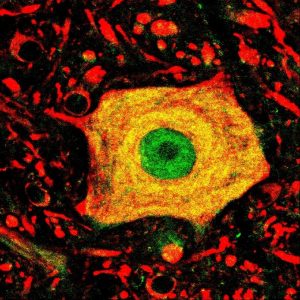
Montevideo, Oct 5 (EFE).- Research carried out by French, US and Uruguayan scientists on immune cells that act upon chronic inflammation from Amyotrophic Lateral Sclerosis (ALS) could represent a crucial contribution for treating the disease.
Emiliano Trias, a researcher at the Pasteur Institute in Montevideo who was the main author of the article published in the Journal of Clinical Investigation Insight, said that the findings on the cell types that act upon inflammation in ALS patients are “novel.”
ALS is an incurable neuromuscular illness also known as Lou Gehrig’s disease.
Gehrig (1903-1941), a hall-of-fame baseball player for the New York Yankees, was afflicted with ALS and forced to retire at 36, two years before his death.
Trias explained that no previous studies have focused on the types of cells involved in the ALS inflammation process.
With the help of Dr. Peter King, a US neurologist who provided tissue samples from ALS patients, the researchers were able to corroborate that what they had observed in animals also took place in humans.
Trias explained that, once the immune cell mechanism has been identified, scientists can start working on treatments that will inhibit those cells and attack the inflammation, which is key to treating the disease.
“These neurodegenerative diseases, especially ALS, do not have a cure and we do not even have treatments that will slow their progression. After symptoms begin, progression is unavoidable and the patients die in approximately three years,” the researcher said.
“It is crucial to find ways to significantly slow the progression of the disease, especially to provide patients with a better quality of life for as long as possible,” he said.
This is why the research team, made up of scientists from the Pasteur Institute, the University of Alabama at Birmingham and the Imagine Institute in Paris are working with a drug named mastinib, used to block the effect of mastocytes in tumors.
“Mastinib is a drug that was recently subject to a global multi-center trial in which more than 400 patients participated. We are not involved in the clinical part (…) but we seek to show new mechanisms and new cells that could be targeted by drugs like this one,” Trias said.
